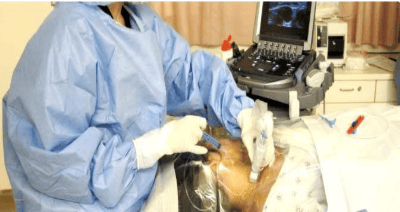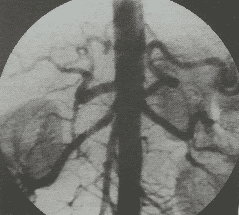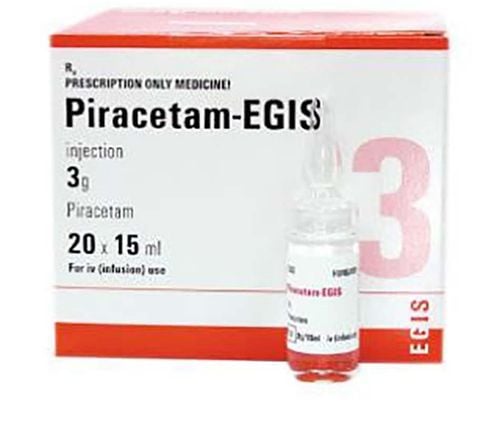This is an automatically translated article.
The article was professionally consulted by Specialist Doctor I Tran Cong Trinh - Radiologist - Radiology Department - Vinmec Central Park International General Hospital.
Digital background erasure and treatment of cerebral aneurysms with flow modification is an endovascular interventional technique. Instead of occlusion of the aneurysm aneurysm is placed on a thick-walled mesh support frame to change orientation. flow in the vessel. From there, the flow in and out of the aneurysm will gradually decrease and lead to thrombus formation in the aneurysm, reducing the risk of rupture and acute events for the patient.
1. What is a brain aneurysm?
A brain aneurysm is a bulge in the wall of a blood vessel in the brain. This condition can lead to the event of a leak or rupture of a brain aneurysm, causing bleeding into the brain that manifests as a hemorrhagic stroke. Usually, when a brain aneurysm ruptures, it occurs in the space between the brain and the thin tissue that covers the brain. This type of hemorrhagic stroke is called a subarachnoid hemorrhage.In case of rupture of aneurys aneurysms and massive release of blood, the patient will suddenly experience extremely severe headache, nausea and vomiting, stiff neck, loss of consciousness and will rapidly become life-threatening. network and need prompt medical treatment. Fortunately, most brain aneurysms do not rupture; however, this disease is sometimes silent or asymptomatic and is often discovered during physical examination for other conditions.
The cause of brain aneurysm is unknown, but there are a number of factors that are thought to increase the risk of developing the disease such as older age, smoking, high blood pressure, drug use, heavy alcohol use ... Certain types of aneurysms can occur after a head injury or from a blood infection. In addition, some congenital factors also cause brain aneurysms such as hereditary connective tissue disorders, polycystic kidney disease, aortic stenosis, cerebral artery malformation or family history of aneurysms. cerebral arteries, especially close relatives such as parents, siblings.
Regardless of the cause, after having a diagnosis based on cranial imaging tools such as computed tomography, magnetic resonance imaging, an interventional treatment plan needs to be reached quickly with the goal of Destroy the aneurysm for primary prevention or emergency occlusion if the aneurysm has ruptured. Measures can be performed by surgical opening of the skull to clamp the aneurysm, endovascular intervention to cause obstruction, or catheterization to redirect the flow.

Nghiện rượu là nguyên nhân gây phình động mạch não
2. What is digitization of background and treatment of cerebral aneurysms with flow modification?
The treatment of wide-necked cerebral aneurysms is a challenging issue for neurosurgeons. However, the recent remarkable development of catheterization (stent) techniques have allowed clinicians to add the ability to treat this pathology while preserving flow.Digital subtraction angiography and flow modification of cerebral aneurysms is an endovascular technique in which, instead of metal coils inside the aneurysm, a cylindrical, metal stent , whose mesh structure will be placed in a blood vessel passing through the aneurysm neck. These stents differ from the traditional stents used for coronary interventions in the heart in that they divert blood flow away from the aneurysm dome. Because of this mechanism, the presence of metal stents in the arterial lumen increases the risk of thrombosis and stroke. Therefore, after intervention to treat cerebral aneurysms with flow modification, the patient must be maintained on two antiplatelet agents simultaneously for a minimum of six months until the stent is endovascularized into the artery wall.
On the other hand, the principle of flow modification of cerebral aneurysms can also be used to treat large or large cerebral aneurysms, when these are limitations of other interventions. At the same time, additional combinations with coil core placement can be added to encourage thrombosis in aneurysms. The stent will prevent the coils from coming out of the aneurysm and maintain the pressure on the coils needed to keep the aneurysm under control, prevent weakening, and prevent rupture.

Đặt ống thông đang được sử dụng phổ biến trong điều trị bệnh
3. Digital imaging process to erase the background and treat brain aneurysms with flow change
Patients and relatives need to be thoroughly explained about the procedure to be prepared, as well as the risks involved, in order to ask for cooperation. Next, the patient needs to fast, change into appropriate clothes and arrange to lie on his back on the intervention table, place an intravenous line with 0.9% physiological saline solution.Means of monitoring breathing, pulse, blood pressure, electrocardiogram, SpO2 are mounted on the patient and the indicators are displayed on the screen for easy observation. After cleaning the inguinal and genital areas, the doctor will cover the area with a sterile tissue to prepare for the intervention. In case the patient is overstimulated and poorly cooperated, it is necessary to consider appointing a sedative to facilitate the process.
At the intervention site, the doctor will administer the usual local anesthetic in most cases from the femoral artery, unless this entrance is not possible, other routes are used. When the anesthetic takes effect, the doctor will insert a needle and insert a 6F dilatation into the lumen of the artery. Heparin anticoagulation is then given as a rapid injection of 2500 units and maintained with an electric syringe at a rate of 500-700 units per hour so that the APTT is between 1.5 and 2 times normal or every subsequent hour. Quick pump 1000 units.
The next step, under the screen of digital background erasure and contrast, the doctor adjusts and inserts the catheter into the intracranial arterial circulation, looking for the artery carrying the aneurysm such as the internal carotid artery or the aneurysm. vertebral vessels with indications for intervention. The next step is to place the microcatheter through the aneurysm, and at the same time check the stability of the microcatheter as well as adjust the microcatheter to be as straight as possible, avoiding roll folds.
At this point, the doctor will thread the bracket frame in the microcatheter and then proceed to release the bracket. The upper and lower ends of the support frame should be at least 4mm above and below the aneurysm on each side. The opening of the bracket should also be checked by threading the microcatheter up to allow the bracket to open well when the pulse is zigzag or the balloon is used.
Finally, the doctor will determine whether the result is satisfactory or not based on the DSA image, the position of the bracket at the aneurysm segment, the frame is completely open and allows the lumen to be revascularized well. The cerebral vessels also circulate normally. At this time, the interventional instruments will be withdrawn. The puncture artery site will be directly pressed by hand for about 15 minutes to stop bleeding and then bandaged for 8 hours. During this time, the patient is limited to bed movement.

Dựa trên hình ảnh của chụp số hóa xóa nền, bác sĩ đánh giá được kết quả của thủ thuật
4. Possible complications in background digitization and treatment of cerebral aneurysms with flow modification
As with any intracranial procedure, digitizing background scans and treating cerebral aneurysms with flow modification also carry certain risks, including:Migratory thrombosis causing thrombosis: Twisted scaffold does not open maximally Intracerebral hemorrhage Endovascular dissection Inguinal hematoma Vasoconstriction Complications related to anesthesia, anesthesia, or contrast media use

Người bệnh có thể gặp biến chứng co thắt mạch sau khi thực hiện thủ thuật
Before taking a job at Vinmec Central Park International General Hospital, the position of Doctor of Radiology from September 2017, Doctor Tran Cong Trinh worked at Gia Dinh People's Hospital since 2007. -2017. In his role, Dr. Tran Cong Trinh has participated in guiding the teaching of students, residents, specialists and new doctors entering the department
For examination and treatment at International General Hospital Vinmec, please come directly to Vinmec Health System or register online HERE.
In April & May 2021, when there is a need for examination and treatment of cerebral aneurysms at Vinmec Times City International Hospital and Vinmec Da Nang International General Hospital, customers will enjoy preferential treatment. Double:
- Free specialist examination and free x-ray
- 50% discount on costs for customers with appointment of post-examination treatment. The program is limited to the corresponding technique of each hospital and to customers who perform this treatment technique for the first time at Vinmec.
Please dial HOTLINE for more information or register for an appointment HERE. Download MyVinmec app to make appointments faster and to manage your bookings easily.













